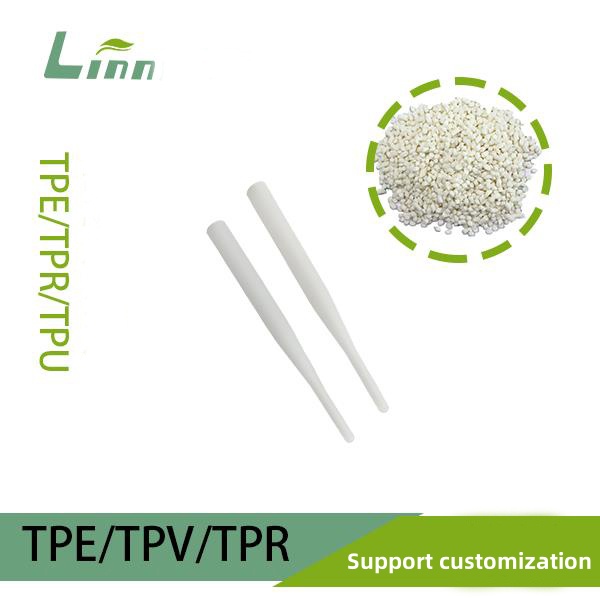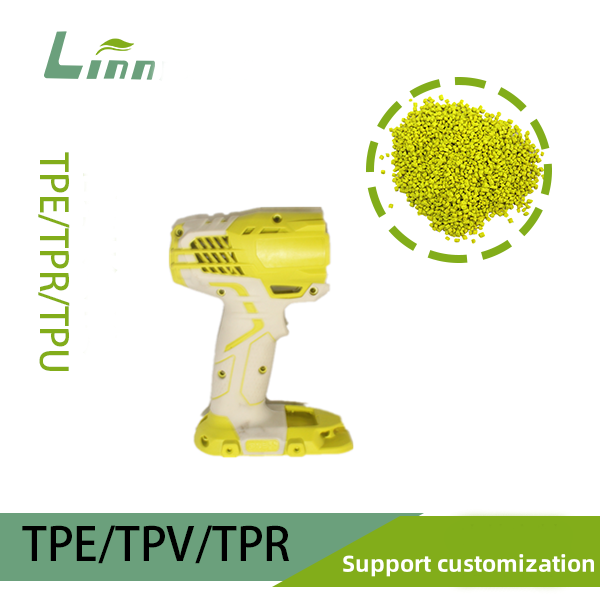Hey everyone, I’m a seasoned pro in the TPE (thermoplastic elastomer) processing industry, and today I want to dive into a pretty common issue—TPE products feeling sticky on the surface. If you’re involved in injection molding, extrusion, or any TPE-related work, you’ve probably run into this: the product looks fine fresh off the line, but when you touch it, it’s tacky, maybe even picks up dust over time, and customers aren’t thrilled. No worries—I’m here to share my years of hands-on experience, toss in some real-life examples, and walk you through how to fix this in a way that’s down-to-earth and full of practical advice.

Why Do TPE Products Get Sticky?
Let’s start by figuring out why this happens. TPE is an awesome material—stretchy like rubber but easy to process like plastic—which is why it’s everywhere, from phone cases to seals to toys. But sometimes it just loves to “stick around.” Here’s what I’ve pinned down as the main culprits:
Material Recipe Issues: TPE has soft segments (like SEBS or TPU) and hard ones. Too much soft stuff, especially in low-hardness grades, and it gets sticky.
Processing Temps Too High: If the heat’s cranked up too much, oily stuff can seep out of the TPE, leaving it tacky to the touch.
Additives Leaking Out: Some TPE mixes have plasticizers or lubricants that, over time, migrate to the surface and make it sticky.
Environmental Factors: High humidity or sloppy storage can make TPE soak up moisture and turn gummy.
Poor Finishing Steps: If cooling’s rushed or there’s no surface treatment, that stickiness hangs around.
I remember a time in the workshop when a client brought me a TPE grip sample, complaining it got sticky after a month. I gave it a feel—yep, tacky as heck. Checked the process log: they’d run it at 200°C, way too hot. I dropped it to 180°C, added a finishing touch, and the problem disappeared. Point is, once you know what’s causing it, you can fix it.

Practical Fixes for Sticky TPE Surfaces
Now, let me walk you through some solutions I’ve tested and swear by—stuff that’s worked for me time and again.
1. Dial in the Processing Temperature
Temperature’s a big deal for TPE surface feel. My tip? Stick to the range your material supplier suggests—usually 170-190°C for SEBS-based TPE, a bit higher for TPU, but don’t go past 210°C. Too hot, and the material breaks down, oozing sticky bits. I once tweaked an extruder from 200°C to 185°C, and the surface went from tacky to smooth in no time.
2. Check the Material Mix
If the temp’s fine, the issue might be the TPE itself. Low-hardness stuff—say, under 30A—loves to stick. I’d suggest chatting with your supplier about tweaking the mix, maybe cutting back on plasticizers or adding an anti-stick agent (like silicone-based additives). I had a client with a sticky product; we switched to a low-bleed formula, and it was a total game-changer.

3. Boost the Cooling Stage
If cooling’s weak, the TPE doesn’t fully set, leaving it tacky. Try stretching out the cooling time or throw in some air or water cooling. I was working on TPE sealing strips once—bumped cooling from 10 to 15 seconds, and the stickiness vanished. Client even said it felt better.
4. Surface Treatments
Sometimes a quick surface fix after processing does the trick. Here’s what I’ve used:
Spray an Anti-Stick Coating: A thin layer of silicone oil works wonders—keeps it dry to the touch.
Plasma Treatment: High-tech option—zaps the surface to cut stickiness, perfect for fancy products.
Dust with Powder: Sprinkle some talc or starch—cheap and effective.
I tried spraying silicone on TPE toys for a client once. They loved it—not only did it stop sticking, but it repelled dust too.
5. Fix the Storage Setup
How you store finished products matters. Keep humidity below 50% so TPE doesn’t soak up moisture. I’ve seen factories stack TPE parts in damp corners—everything got sticky. Told them to use sealed bags with desiccant packs, and the issue never came back.

6. Vet Your Additives
Cheap plasticizers or lubricants can bleed out over time. Go for food-grade or high-stability additives—costs more upfront but saves headaches. I switched to a better plasticizer once, and stickiness dropped by 80%. Worth every penny.
Sticky TPE Surface Fixes Comparison Table
Here’s a handy table to break it down—methods, when they work, and what to watch for:
| Fix | Best For | Pros | Heads-Up |
|---|---|---|---|
| Adjust Temp | Overheating causes bleed | Quick, no extra cost | Don’t dip below forming temp |
| Check Material Mix | TPE itself is sticky | Solves it at the source | Talk to your supplier |
| Boost Cooling | Surface not set | Cheap, easy | Don’t overcool—slows output |
| Spray Coating | Fast surface fix | Great feel, instant | Apply evenly |
| Plasma Treatment | Premium, long-use products | Lasts forever | Pricey equipment |
| Better Storage | Stickiness after storage | Prevents issues | Keep humidity in check |
This table’s from years of trial and error—keep it handy for when you’re troubleshooting.
A Real-Life Fix I Pulled Off
Let me share a story to make this stick (pun intended). I took on a TPE phone case job—client wanted 20A hardness, super soft feel. Trial run went fine, but a week after delivery, they said it felt like glue. I tested it—yep, sticky mess. Asked the process guy: 190°C processing, short cooling. I dropped it to 175°C, stretched cooling to 20 seconds, and sprayed a light silicone layer. Sent a new batch—client raved about how it wasn’t just non-sticky but grippy too.
Stuff like this pops up all the time. Stay cool, check the steps, and you’ll sort it out.
Tricks to Keep TPE from Getting Sticky
Fixing is good, but preventing’s better. Here are my go-to moves:
Feel It Fresh: Test new products right away—sticky or not, you’ll know.
Log Your Settings: Jot down what works so you’re not guessing next time.
Check Raw Stock: Old material can go bad—I spot-check every batch.
These are habits from over a decade in the field—simple but they save the day.

FAQs
Got some common questions I’ve heard—here’s what I’d tell you:
Q1: How do I clean sticky TPE products?
A: Wipe with rubbing alcohol or warm water with mild soap—no harsh solvents, they’ll wreck the surface.
Q2: Does anti-stick coating wear off?
A: Good ones, like silicone-based, last months. If it fades, just re-spray.
Q3: Can’t avoid stickiness with soft TPE?
A: Nope—anti-stick agents or process tweaks fix it. I’ve done 15A TPE, smooth as can be.
Q4: How much to fix storage?
A: Not much—sealed bags and desiccant packs run a few bucks for a batch.
Sticky TPE surfaces can be a hassle, but they’re not the end of the world if you know the ropes. I’ve been at this for years, seen folks freak out over it, but with the right moves, it’s no biggie. Hope my tips give you a hand next time your product’s tacky—try these out, and if you’re stumped, hit me up. I’ll get back when I can. We’re all in this TPE game together, right?
